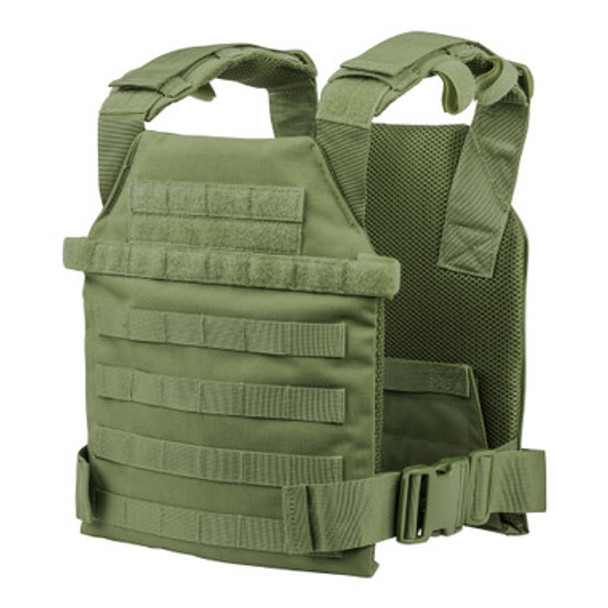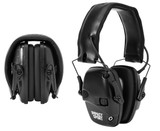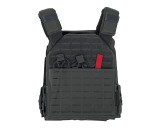Understanding Plate Carriers: A Comprehensive Guide
Introduction
Plate carriers are a critical component of modern body armor systems, widely used by military personnel, law enforcement officers, and security professionals. Designed to hold ballistic plates and provide additional storage for gear, plate carriers offer protection and utility in high-risk environments. This detailed guide will explain what a plate carrier is, the nuances of selecting the right one, and how to ensure a proper fit.
What is a Plate Carrier?
A plate carrier is a type of body armor designed to hold ballistic plates that protect the wearer from gunfire and shrapnel. Unlike traditional body armor, which often includes soft armor panels, plate carriers primarily use hard armor plates to provide a higher level of protection. They are modular, allowing users to add or remove accessories based on specific needs.
Components of a Plate Carrier
| Component | Description |
| Front Panel | Holds the front ballistic plate, often includes pouches for gear |
| Back Panel | Holds the rear ballistic plate, may have attachment points for gear |
| Side Panels | Optional components that hold side plates for additional protection |
| Shoulder Straps | Adjustable straps that secure the carrier to the shoulders |
| Cummerbund | Wraps around the torso to secure the carrier, often includes pouches |
| MOLLE Webbing | Modular Lightweight Load-carrying Equipment, allows attachment of pouches and accessories |
| Quick Release System | Allows for rapid removal of the carrier in emergencies |
Key Components of a Plate Carrier
| Component | Function |
| Front Panel | Holds front ballistic plate, gear storage |
| Back Panel | Holds rear ballistic plate, gear attachment points |
| Side Panels | Additional protection with side plates |
| Shoulder Straps | Secure carrier to shoulders, adjust fit |
| Cummerbund | Secures carrier around torso, gear storage |
| MOLLE Webbing | Attachment of pouches and accessories |
| Quick Release System | Rapid removal in emergencies |
How Should a Plate Carrier Fit?
A properly fitting plate carrier is crucial for both protection and comfort. The fit of a plate carrier affects its effectiveness in covering vital areas and its ability to distribute weight evenly. Here are the key points to ensure a proper fit:
- Positioning of Plates: The front plate should sit high on the chest, with the top edge aligned with the collarbone. The rear plate should align with the top of the shoulder blades.
- Adjustability: The carrier should have adjustable shoulder straps and cummerbund to achieve a snug fit without restricting movement.
- Coverage: Ensure the plates cover vital organs (heart and lungs) while allowing for full range of motion.
- Comfort: Look for padded straps and breathable materials to reduce fatigue and heat buildup.
Fitting a Plate Carrier
| Fit Aspect | Description |
| Positioning of Plates | Front plate top edge at collarbone, rear plate at shoulder blades |
| Adjustability | Adjustable shoulder straps and cummerbund for snug fit |
| Coverage | Plates cover vital organs, allow full range of motion |
| Comfort | Padded straps, breathable materials |
What Size Plate Carrier Do I Need?
Selecting the right size plate carrier involves matching the size of the carrier to the size of the ballistic plates and ensuring it fits your body type. Here's a step-by-step guide to determine the right size:
- Measure Your Torso: Measure the length from your collarbone to your navel and the width across your chest.
- Plate Size: Choose plates that correspond to these measurements. Standard plate sizes are 10x12 inches for medium, but sizes can vary.
- Carrier Size: Ensure the plate carrier can accommodate the size of the plates you choose. Carriers often come in small, medium, large, and extra-large sizes, matching the plate dimensions.
Plate Carrier Sizing Guide
| Measurement | Description |
| Torso Length | Measure from collarbone to navel |
| Chest Width | Measure across the widest part of the chest |
| Standard Plate Size | Medium: 10x12 inches, Small/Large vary |
| Carrier Size | Small, Medium, Large, XL matching plate dimensions |
Nuances When Selecting a Plate Carrier
When selecting a plate carrier, consider the following nuances to ensure you choose the best option for your needs:
- Intended Use: Determine if the carrier is for military, law enforcement, or personal protection to choose the appropriate level of durability and features.
- Material: Look for high-quality materials like 500D or 1000D Cordura for durability and longevity.
- Weight: Balance the need for protection with the ability to carry the weight comfortably.
- Compatibility: Ensure the carrier is compatible with the type and size of plates you plan to use.
- MOLLE/PALS Webbing: Consider the amount and placement of webbing for attaching pouches and accessories.
Considerations for Selecting a Plate Carrier
| Consideration | Description |
| Intended Use | Military, law enforcement, personal protection |
| Material | Durability (500D/1000D Cordura) |
| Weight | Balance protection and comfort |
| Compatibility | Match carrier with plate type and size |
| MOLLE/PALS Webbing | Attachment points for pouches and accessories |
Conclusion
Understanding what a plate carrier is and how to select the right one is essential for ensuring optimal protection and comfort. By considering factors such as fit, size, intended use, material, weight, and compatibility, you can make an informed decision. Properly fitted and chosen plate carriers provide crucial protection in high-risk environments, enhancing both safety and operational effectiveness.
Recent Posts
-
Understanding Ballistic Shield Ratings and Their Applications
The Trusted Name in Tactical Defense - BattleSteel® When it comes to protecting those who protect us …2025-04-19 -
The Importance of Hearing Protection in Tactical Environments
The Legacy of BattleSteel® BattleSteel® is a trusted name in the world of tactical defense equipment …2025-04-14 -
How to Properly Fit and Wear a Plate Carrier
About BattleSteel and Their Mission BattleSteel is a trusted name in the tactical gear industry, ren …2025-04-11




